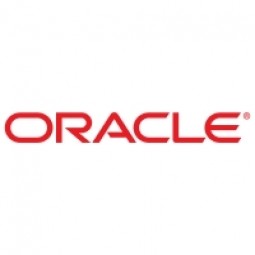
Technology Category
- Application Infrastructure & Middleware - Database Management & Storage
- Infrastructure as a Service (IaaS) - Cloud Databases
Applicable Industries
- Cement
- Education
Applicable Functions
- Maintenance
- Product Research & Development
Use Cases
- Autonomous Transport Systems
- Smart Campus
Services
- Cloud Planning, Design & Implementation Services
- Training
The Customer
Oracle University
About The Customer
Oracle University is a platform that helps customers build proficiency with Oracle Cloud Infrastructure (OCI) and SaaS applications. It offers Oracle Guided Learning, which is integrated with Oracle Cloud Applications, providing up-to-date guidance and knowledge in the user’s workflow. Oracle MyLearn, another offering from Oracle University, provides subscription-based, personalized training on a range of Oracle solutions, including OCI, Oracle Cloud Applications, and database and industry solutions. Oracle University incorporated technology that was acquired by Oracle in 2018 and migrated from AWS to OCI.
The Challenge
Oracle University, a platform that provides proficiency training on Oracle Cloud Infrastructure (OCI) and SaaS applications, faced significant challenges with its underlying database system. The system, which was initially based on AWS and used PostgreSQL, was migrated to OCI in 2018. However, the PostgreSQL system had several shortcomings. Performance optimization was subpar, and building a high-availability (HA) setup required substantial expertise. The system also required additional compute resources, which led to downtime and necessitated the management of the underlying block storage that PostgreSQL used. This resulted in high administrative overhead and required expertise, making the system inefficient and costly to maintain.
The Solution
To address these challenges, the Oracle University development team chose Oracle Autonomous Database for transaction processing to replace PostgreSQL for Oracle Guided Learning. This solution supports developers in creating new guides and end users in interacting with those guides from host applications. Autonomous Database for analytics and data warehousing was also implemented to support administrative users in understanding the usage of the entire learning environment. Oracle MyLearn, a new application, was built on Autonomous Database for transaction processing and mixed workloads. The Autonomous Database automatically manages storage and allows additional storage or compute resources on demand without needing specialized expertise or taking the database down. It also handles backups, performance tuning, patching, and updates automatically, reducing operational costs. The database comes with pre-set security policies and settings, reducing the work needed to keep data secure and decreasing the risk of errors. It also simplified the process of integrating with object storage, a crucial part of the overall solution.
Operational Impact
Quantitative Benefit

Case Study missing?
Start adding your own!
Register with your work email and create a new case study profile for your business.
Related Case Studies.

Case Study
System 800xA at Indian Cement Plants
Chettinad Cement recognized that further efficiencies could be achieved in its cement manufacturing process. It looked to investing in comprehensive operational and control technologies to manage and derive productivity and energy efficiency gains from the assets on Line 2, their second plant in India.

Case Study
Revolutionizing Medical Training in India: GSL Smart Lab and the LAP Mentor
The GSL SMART Lab, a collective effort of the GSL College of Medicine and the GSL College of Nursing and Health Science, was facing a challenge in providing superior training to healthcare professionals. As clinical medicine was becoming more focused on patient safety and quality of care, the need for medical simulation to bridge the educational gap between the classroom and the clinical environment was becoming increasingly apparent. Dr. Sandeep Ganni, the director of the GSL SMART Lab, envisioned a world-class surgical and medical training center where physicians and healthcare professionals could learn skills through simulation training. He was looking for different simulators for different specialties to provide both basic and advanced simulation training. For laparoscopic surgery, he was interested in a high fidelity simulator that could provide basic surgical and suturing skills training for international accreditation as well as specific hands-on training in complex laparoscopic procedures for practicing physicians in India.

Case Study
IoT platform Enables Safety Solutions for U.S. School Districts
Designed to alert drivers when schoolchildren are present, especially in low-visibility conditions, school-zone flasher signals are typically updated manually at each school. The switching is based on the school calendar and manually changed when an unexpected early dismissal occurs, as in the case of a weather-event altering the normal schedule. The process to reprogram the flashers requires a significant effort by school district personnel to implement due to the large number of warning flashers installed across an entire school district.

Case Study
Digital Transformation of Atlanta Grout & Tile: An IoT Case Study
Atlanta Grout & Tile, a Tile, Stone & Grout restoration company based in Woodstock, Georgia, was facing challenges with its traditional business model. Despite steady growth over the years, the company was falling behind the web revolution and missing out on the opportunity to tap into a new consumer base. They were using independent software from different vendors for each of their department information and workforce management. This resulted in a lot of manual work on excel and the need to export/import data between different systems. This not only increased overhead costs but also slowed down their response to clients. The company also had to prepare numerous reports manually and lacked access to customer trends for effective business decision-making.

Case Study
Implementing Robotic Surgery Training Simulator for Enhanced Surgical Proficiency
Fundacio Puigvert, a leading European medical center specializing in Urology, Nephrology, and Andrology, faced a significant challenge in training its surgical residents. The institution recognized the need for a more standardized and comprehensive training curriculum, particularly in the area of robotic surgery. The challenge was underscored by two independent studies showing that less than 5% of residents in Italian and German residency programs could perform major or complex procedures by the end of their residency. The institution sought to establish a virtual reality simulation lab that would include endourological, laparoscopic, and robotic platforms. However, they needed a simulator that could replicate both the hardware and software of the robotic Da Vinci console used in the operating room, without being connected to the actual physical console. They also required a system that could provide both basic and advanced simulation training, and a metrics system to assess the proficiency of the trainees before they performed surgical procedures in the operating theater.








